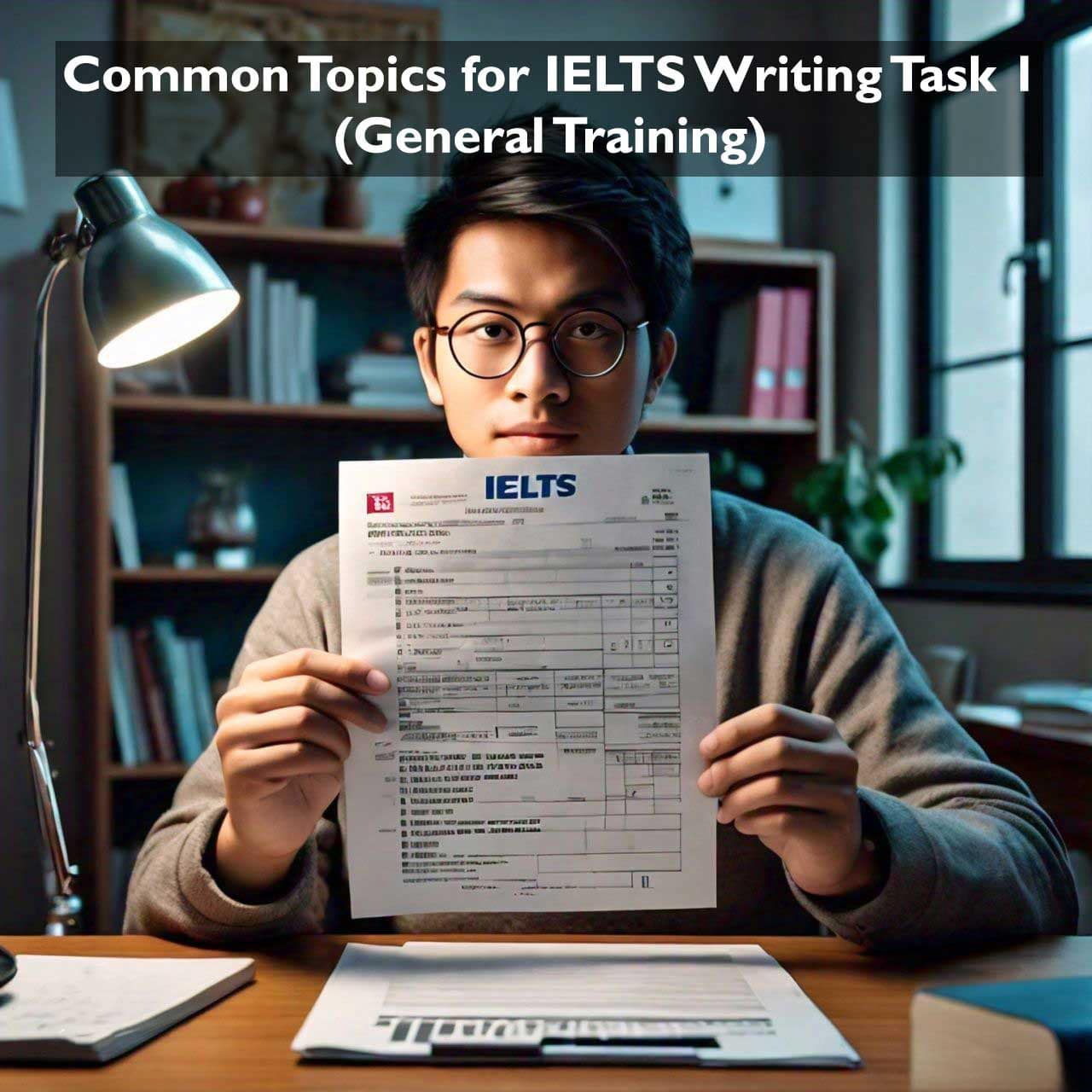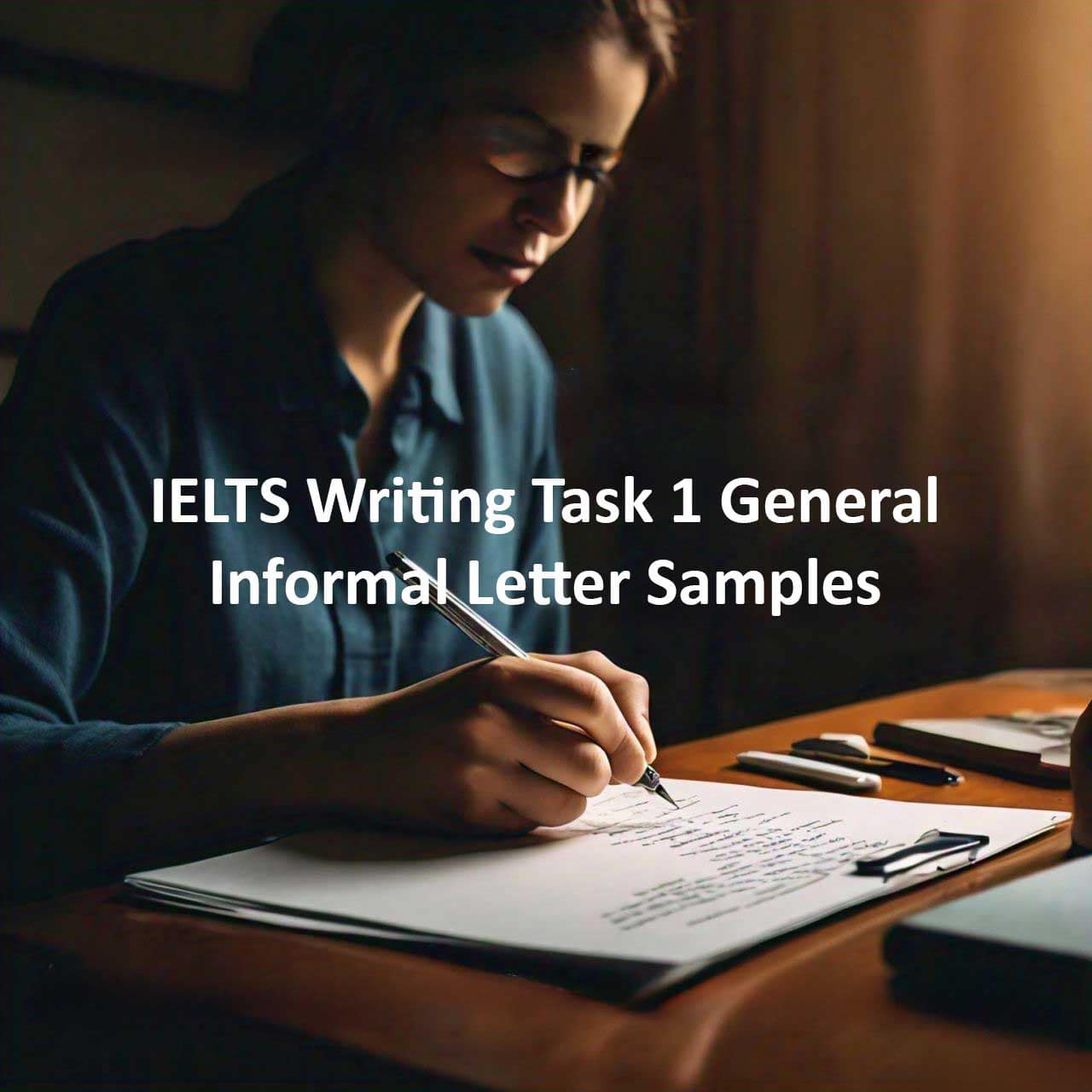The IELTS Writing module is a vital part of the IELTS exam, designed to assess your writing skills and your ability to communicate effectively in written English. For those taking the General Training version of the test, Writing Task 1 involves writing a letter in response to a given situation. This blog post will cover common topics for IELTS Writing Task 1 (General Training) and provide tips to help you prepare effectively.
Table of Contents
Overview of IELTS Writing Task 1 (General Training)
In IELTS Writing Task 1 (General Training), you are required to write a letter based on a given situation. The letter can be formal, semi-formal, or informal, depending on the context. You have 20 minutes to complete this task, and you should aim to write at least 150 words. The letter should address the three bullet points provided in the task and demonstrate your ability to organize information, use appropriate language, and express your ideas clearly.
Common Topics
1. Personal Letters
– Invitations: Inviting someone to an event such as a party, wedding, or dinner.
– Apologies: Apologizing for something you did or failed to do.
– Requests: Asking for information, help, or a favor.
– Thank You Letters: Expressing gratitude for help, gifts, or hospitality.
– Congratulations: Congratulating someone on an achievement or event.
2. Work-Related Letters
– Job Applications: Applying for a job, including details about your qualifications and experience.
– Resignations: Informing your employer that you are leaving your job.
– Requests for Leave: Asking for time off from work for personal reasons.
– Complaints: Raising an issue about a problem at work or with a colleague.
3. Service and Product Letters
– Complaints: Complaining about a product or service, detailing the problem, and requesting a solution.
– Requests for Information: Inquiring about services, products, or courses.
– Requests for Refunds or Exchanges: Asking for a refund or exchange for a faulty product or poor service.
4. Accommodation Letters
– Requests for Repairs: Requesting repairs or maintenance for your accommodation.
– Complaints: Complaining about issues with your accommodation, such as noise, maintenance, or neighbors.
– Requests for Information: Inquiring about rental properties or accommodation details.
Tips for Writing an Effective Letter
1. Understand the Tone: Determine whether the letter should be formal, semi-formal, or informal. The tone will influence your choice of language and level of formality.
– Formal: Used for business or official purposes (e.g., job applications, complaints to companies).
– Semi-Formal: Used when writing to someone you know but with whom you have a professional relationship (e.g., requesting leave from your boss).
– Informal: Used for personal letters to friends or family.
2. Address All Bullet Points: Make sure your letter covers all three bullet points provided in the task. This will ensure you answer the question fully and demonstrate your ability to organize information effectively.
3. Use Appropriate Language and Structure: Use a clear and logical structure, with paragraphs for each main point. Start with a suitable greeting and end with an appropriate closing.
– Formal Letters: Start with “Dear Sir/Madam” and end with “Yours faithfully.”
– Semi-Formal Letters: Start with “Dear [Name]” and end with “Yours sincerely.”
– Informal Letters: Start with “Dear [Name]” and end with “Best regards” or “Kind regards.”
4. Be Clear and Concise: Clearly express your ideas and avoid unnecessary details. Stick to the point and ensure each sentence contributes to the overall purpose of the letter.
5. Check Your Grammar and Spelling: Use correct grammar, punctuation, and spelling. Errors can detract from the clarity and professionalism of your letter.
6. Practice Regularly: Regular practice will help you become more comfortable with different types of letters and improve your writing skills. Use sample tasks to practice and seek feedback from teachers or peers.
Example Task and Response
Task:
You recently stayed at a hotel and were very unhappy with the service you received. Write a letter to the hotel manager. In your letter:
1. Explain why you were unhappy with the service.
2. Describe the problems you faced.
3. Suggest what the hotel should do to improve its service.
Example Response:
Dear Sir/Madam,
I am writing to express my dissatisfaction with the service I received during my recent stay at your hotel. I stayed at your hotel from May 1st to May 5th in room 305.
Firstly, I was disappointed with the cleanliness of the room. Upon arrival, I found that the bathroom had not been properly cleaned, and there were stains on the bed sheets. Despite reporting this issue to the reception, it was not addressed promptly.
Secondly, the hotel staff were unhelpful and rude. On one occasion, I requested extra towels, but the staff member I spoke to was dismissive and uncooperative. Additionally, the room service was slow, and my orders were often incorrect.
To improve your service, I suggest that you ensure all rooms are thoroughly cleaned before new guests arrive. Additionally, your staff would benefit from customer service training to enhance their interactions with guests. Timely and accurate room service should also be a priority.
Thank you for your attention to these matters. I hope to see improvements during my next visit.
Yours faithfully,
John Smith
Conclusion
Preparing for IELTS Writing Task 1 (General Training) involves understanding common topics, using appropriate language and tone, and practicing regularly. By familiarizing yourself with the types of letters you might need to write and applying the strategies outlined in this blog post, you can improve your writing skills and perform confidently on the test. Remember, clear and effective communication is key. Good luck!



